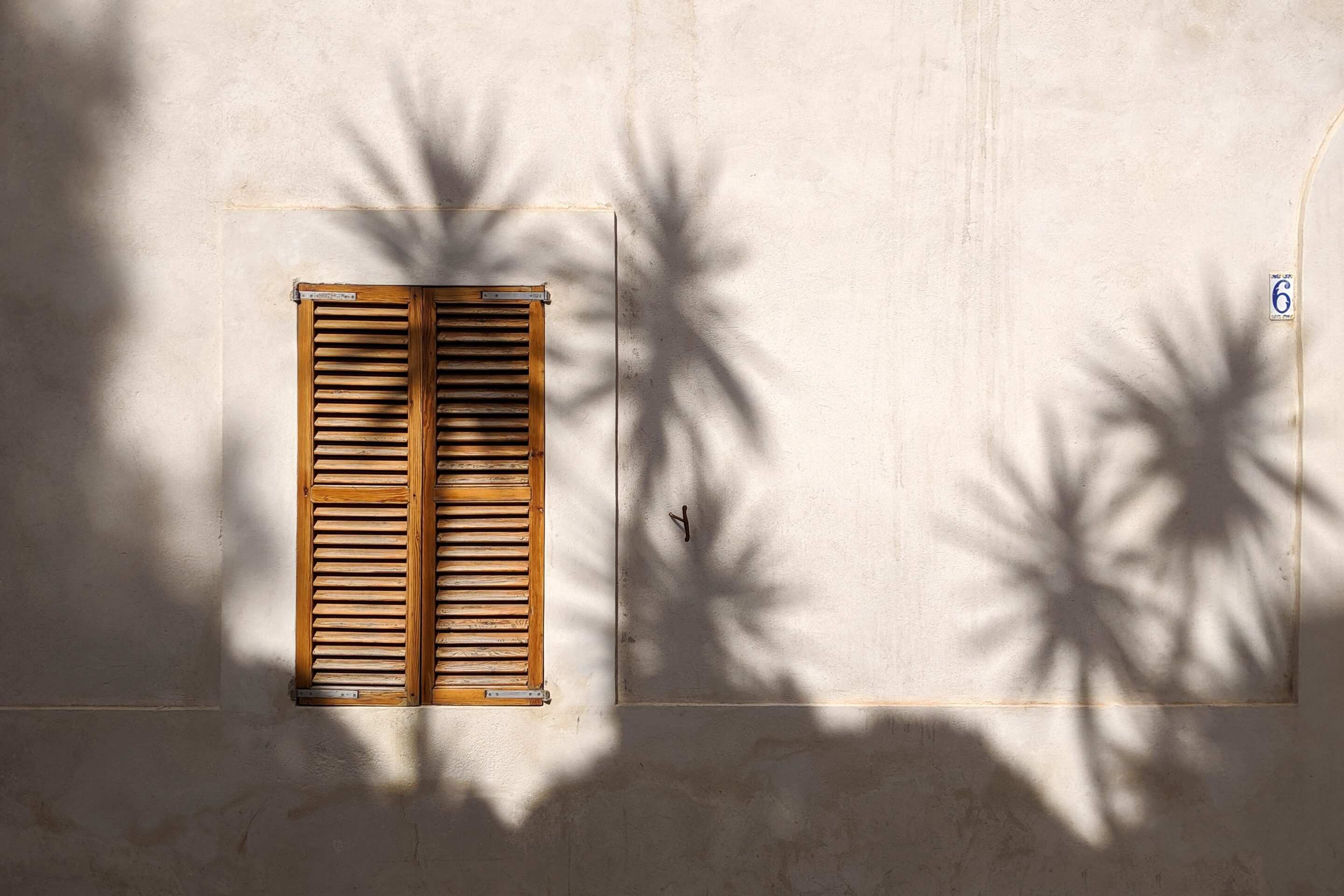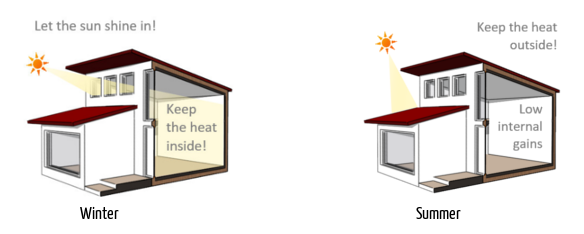
No, it’s not your imagination—it definitely is getting hotter every summer in BC.
Here are 5 easy and cost-effective energy efficiency upgrades to help you beat the heat and save energy at home.
1 – Keep the heat out with passive cooling strategies
Most homes today have central heating or cooling. These units consume an immense amount of electricity and energy which isn’t good for the environment or your utility bill. Passive cooling is when your home regulates the temperature without you needing to take an active part in the process.
If you’re looking for a more cost-effective and eco-friendly way to control the temperature of your home, passive cooling could be your solution.
Whether you are building or renovating, passive cooling options should be considered early in the design process. Simple but effective options include using plants or awnings to shade windows from the outside, or installing extra insulation.
Install extra insulation
In essence, insulation minimizes the amount of heat that’s able to pass between the inside and outside of your home. During the winter you want your insulation to retain heat and make sure it stays inside, while during the summer it’s all about keeping the hot air out and the cool air in.
Ensuring you have the right insulation in place will help your house regulate its temperature all year round.
Unfinished basements and attics are the two areas you should focus on first when adding new insulation. They can be topped up with insulation in a very cost-effective way as no demolition is required, just adding more insulation.
Plant trees and plants
Planting the right trees in the right places conserves energy and reduces your energy bills, while helping to fight global warming. A well-placed tree or shrub can provide your home with summer shade and winter warmth, while also acting as a wind and snow break. Planting them on the south and west sides of your house, or at least over your outdoor A/C unit, can make your cooling systems up to 10 percent more efficient.
Use awnings
During summer, keeping solar loads low will prevent the building from heating up. Shading is important to keep your home cool. Curtains or blinds can help but using exterior shading elements are much more effective.
Shading should be designed to take into account the sun’s path on your site in summer and winter. The sun travels higher in the sky in summer, so shading can be designed to keep the summer sun out but let the winter sun in. If you already live in your home the easiest way to check the sun’s path is by observation. If it is a new home, you can ask your architect to create a sun path model.

Source: International Passive House Association (iPHA)
2 – Make your home airtight
Airtightness has only been regulated recently in BC so you can assume that your home is pretty leaky. The older it is the worse it’s likely to be. We could (and will) dedicate a whole new article to airtightness itself but in short, even if your home is well insulated, poor airtightness will reduce the efficiency of the insulation installed. The hot summer air will enter your home by little cracks all around the house.
By air sealing your house effectively, hot air has a much harder time getting inside.
3 – Install and take good care of your heat pump
An attractive feature of a heat pump is its cooling ability. In the cooling cycle, the heat pump transfers heat out of your home. Using your heat pump properly and maintaining it regularly will offer you the best performance, energy savings, and the most lifespan out of your unit.
Maintain it regularly
Just like all other systems, regular maintenance will ensure your heat pump remains in peak working order and will provide you with efficient, cost-effective cooling/heating. Your owner’s manual will provide guidance on how to set your system up optimally for your needs and recommended maintenance schedule.
Clean the filters
Cooling requires more airflow than heating and filters accumulate a substantial amount of dust and dirt over time. If your filter is dirty, your system will have to work harder to keep you comfortable and you’ll see the difference in your energy bills. As a bonus, cleaning your filters also increases your indoor air quality.
Set it to cool mode and go get a cold lemonade
Heat pumps work best when holding a steady temperature. Find a temperature setting you’re most comfortable with and try to minimize changes. Frequent setting changes may cost you more and take longer to reach the desired temperature.
4 – Use windows strategically
Be thoughtful about their location
We understand you do not have complete control over the orientation of your home, especially when doing renovations, but it is still very important to consider which direction the building is facing and where the windows are installed.
Windows facing east or west make shading difficult from the low altitude of the morning or afternoon sun. South-facing windows can be shaded during the summer by overhangs, whilst still taking advantage of most of the solar gains from the lower angle of the sun during winter.
Reduce the U-value, optimize the SHGC
When choosing energy-efficient windows, the first thing to look for is window energy ratings. In Canada, the energy performance of windows, doors, and skylights is tested using the Canadian Standards Association (CSA) A440.2 standard.
You want to pick windows that have a low U-value (rate of heat transfer from warm to cold areas) and an optimized Solar Heat Gain Coefficient (SHGC). The SHGC tells you about the measurement of solar energy transmitted through the window. Thus, it tells you how well the window does at blocking heat from the sun.
The U-value and the SHGC are key elements of your home’s energy performance and comfort. Now, it would be too easy if there were one-size-fits-all windows! Since every house is unique, we have to manually play with those values to find the optimal fit for your home. That’s why we call it optimization.
5 – Go to the lake
I know what you’re thinking – why is my green building expert telling me to get outside of my home? But what is summer for other than enjoying the things we can’t do during the colder months?
When you’re out of the house, you’re not using energy that would otherwise be used to cool you off. The rising demand for space cooling is also putting enormous strain on our electricity grid, as well as driving up emissions. By staying in a vegetated area or swimming in the lake, you’re taking advantage of nature’s solutions to cool you off. For free.
Last building science nerdy bits
Adding more insulation in wall cavities of an old home with high air leakage rates can cause condensation problems in walls. Moisture can be trapped with the heat if ventilation and condensation are not taken into consideration. It is important to plan proper ventilation system upgrades along with airtightness improvements.
Staying cool in the summer (or warm in the winter) goes hand in hand with saving energy, keeping money in your pocket, and reducing your impact on the environment. You don’t need to make all of these changes in a year. Instead, be strategic about your home improvement choices so that you’re incorporating smart energy solutions as well.
Have a home-related question? Need an energy assessment of your home?

